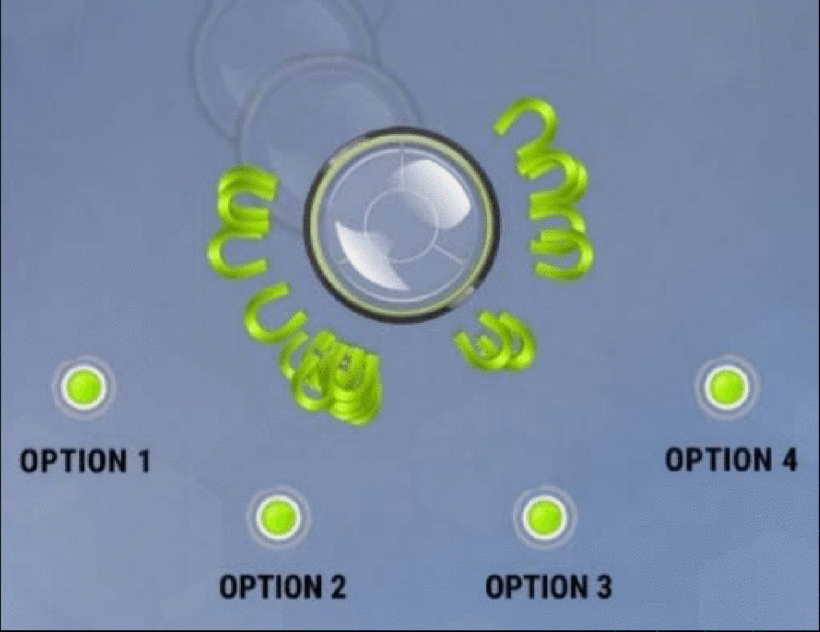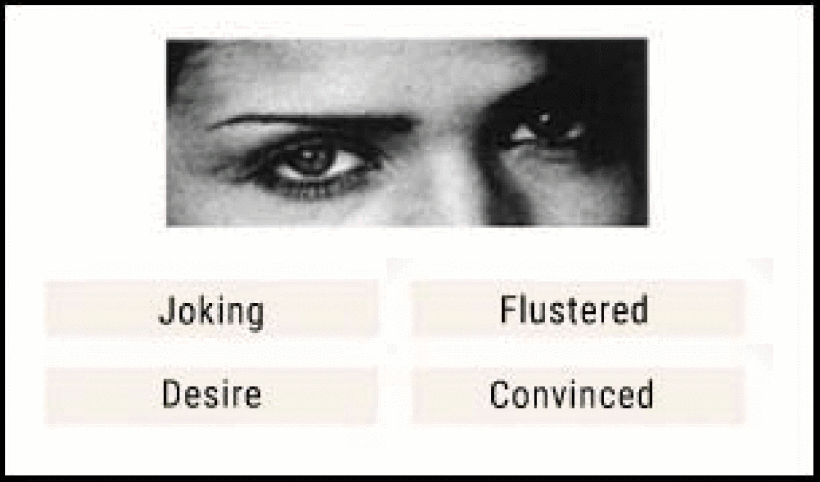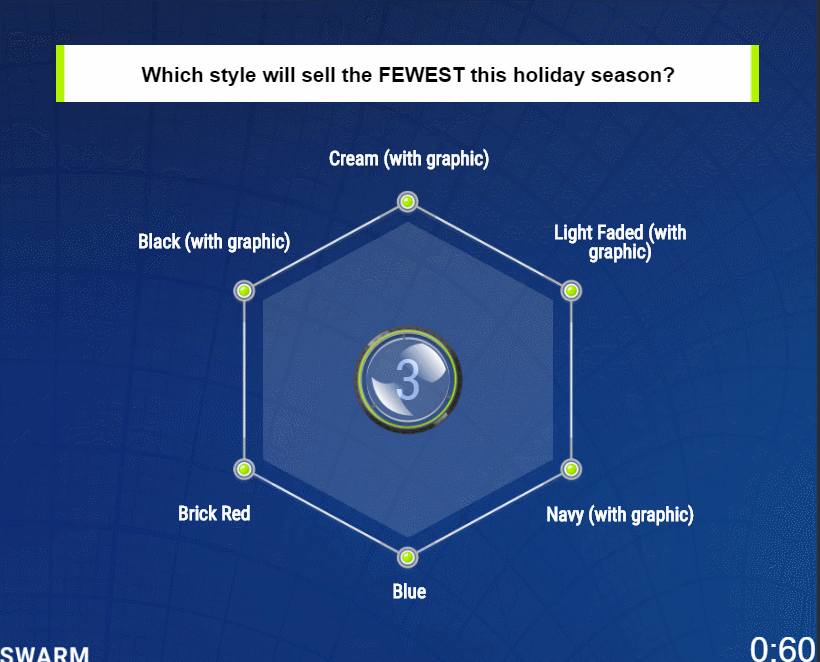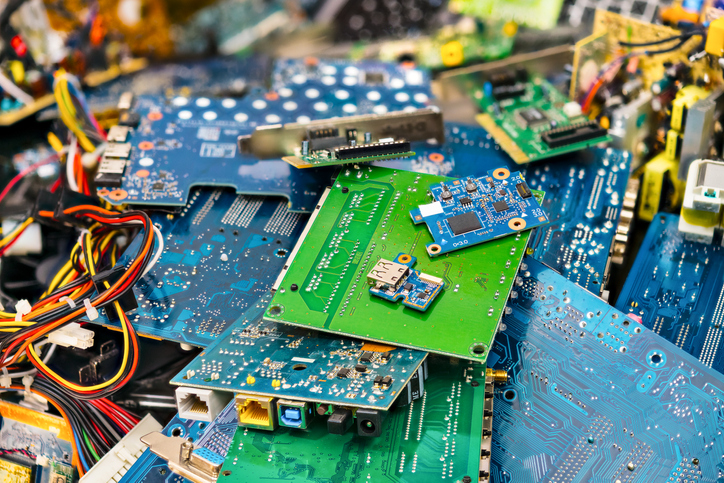Unlike birds, bees, and fish, humans have not evolved to have the natural ability to communicate and make decisions as a group in real-time. When fish swim in a school, they use subtle vibrations to alert each other of predators. In a similar way, birds utilize the power of group intelligence by flying in flocks to provide uplift and increase the distance they’re able to fly. Referred to as swarm intelligence, these processes involve forming real-time closed loop systems, and they increase the collective intelligence of a group.
In order to enable a network of human groups to form similar real-time systems, a software platform called swarm.ai was developed by a San Francisco based company called Unanimous AI. It allows distributed groups to make predictions and reach decisions by collaboratively moving a graphical puck toward specified answers.

Figure 1: A human swarm choosing between options in real-time
“The natural phenomenon of ‘Swarm Intelligence’ has been observed to amplify the intelligence of biological groups, such as fish and birds,” explained Louis Rosenberg, CEO and Chief Scientist of Unanimous AI. “We wanted to know whether business teams, connected together by Swarm AI technology, could also amplify their collective intelligence.”
In order to test this theory, researchers from California Polytechnic State University worked with Unanimous AI to measure the social intelligence of individuals, and groups, with the “Reading the Mind in the Eyes” (RME) test. The RME test quantifies how well individuals can put themselves into the mind of another person and assess their mental state. It does this by showing a narrow facial image restricted to the eyes and asking participants to select one of four words to describe the emotion expressed.

Figure 2: Sample question from standard RME test
First, 302 study participants were administered a 35 question RME assessment individually through an online survey. Second, 61 teams made up of three to six members were administered the RME test through the swarm.ai platform. Each team had 60-seconds to collaboratively decide on an answer and were discouraged from communicating with one another.
The average individual RME score was 23.96, which corresponds to an error rate of 31.5%. When teams worked together as a swarm the average RME score increased to 29.96, with an error rate of 15.3%. The results showed that working as swarms through the platform amplified performance on social perceptions and emotional reasoning tasks, reducing their error rate by almost half.
However, the application of this technology and swarm intelligence goes much further than social and emotional tasks. From helping fashion brands predict product best sellers, to accurately predicting the winner of the Kentucky Derby, the platform and swarm intelligence has wide-ranging applications.

Figure 3: Swarm.ai used to predict the best-selling product for the upcoming holiday season
“When using Swarm, distributed teams can quickly converge on superior decisions and make better estimates for scheduling, budgeting, and prioritization,” said Louis Rosenberg. “The results demonstrate the significant advantage forming real-time systems has over traditional methods of tapping the intelligence of groups.”
Next, the research team is working on exploring whether the platform can be used to prioritize a set of objectives more effectively than vote-taking and open-ended discussions, with the hope that business teams can eventually use this application. Results have been promising so far, and as businesses expand across the world, encouraging workers to collaborate across continents, swarm intelligence may prove an invaluable decision-making tool and significantly improve efficiency.
For more information on AI, visit the IEEE Xplore Digital Library.





